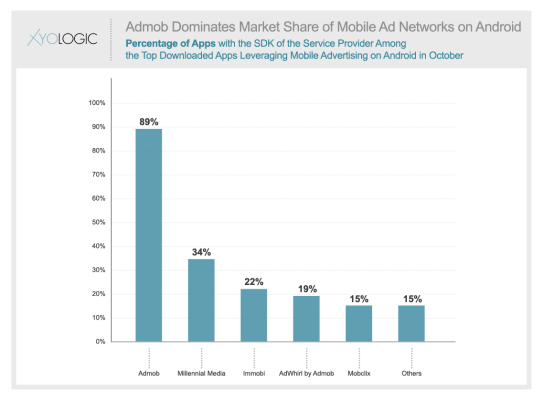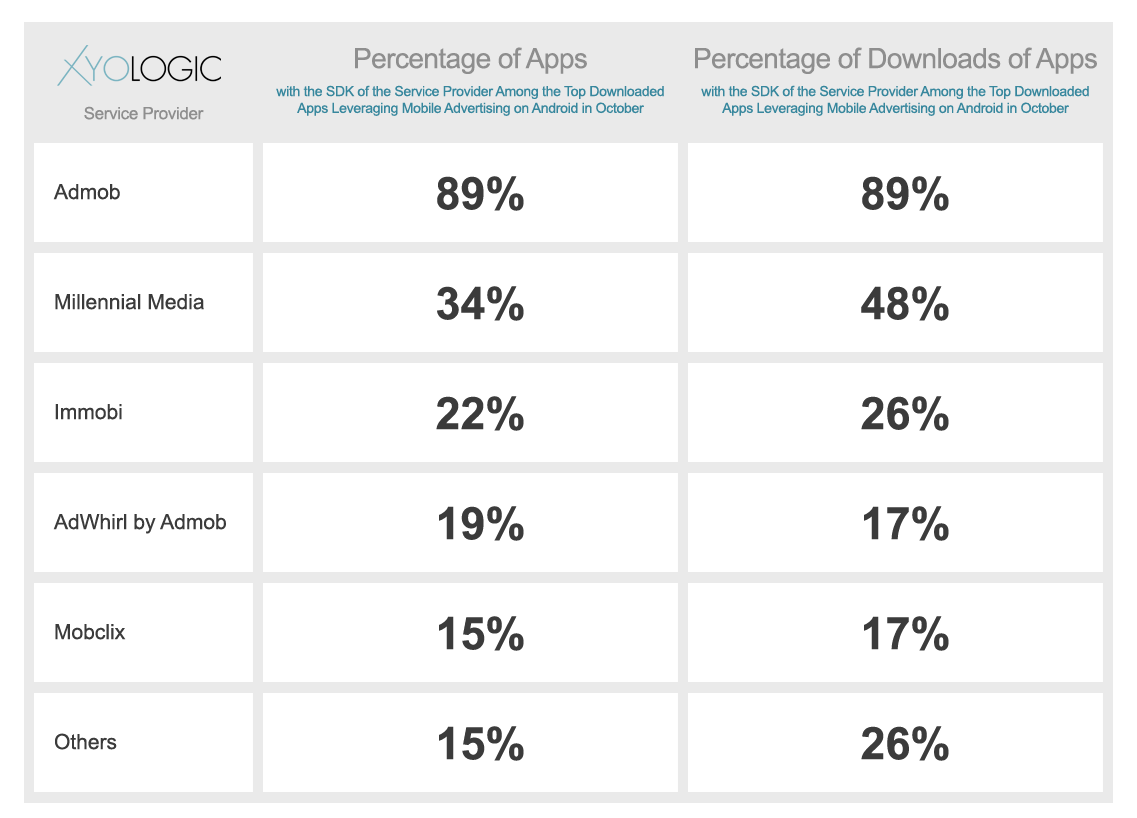Mobile analytics firm Xyologic has released a market share breakdown that estimates the mobile ad and ad exchange network breakdowns on Android. According to its research, AdMob was found to be the dominant player on the Android platform, with an 89% market share, based on an analysis of all the downloaded ad-supported Android apps in the month of October.
Millennial Media, Inmobi, AdMob acquisition AdWhirl and Mobclix trailed further behind.
Although the IDC releases a report on the mobile advertising ecosystem each year, it is often disputed, explains Xyologic Co-founder Matthaus Krzykowski. In addition, the IDC research doesn’t drill down into either operating system or app level data. Xyologic’s study does.
According to its findings, 50% of the top 1,000 downloaded apps on Android in October had at least one mobile ad network or mobile ad exchange SDK. And 22% of these had two or more mobile ad network SDKs.
In the group containing just the top 1,000 ad-supported apps, 89% used AdMob’s SDK, 34% used Millennial Media’s SDK, 22% used Inmobi, 19% used AdWhirl and 15% used Mobclix.
Out of all the ad-supported Android apps, 89% used AdMob, 48% used Millennial Media, 26% used Inmobi, 17% used AdWhirl and 17% used Mobclix.
To be clear, ad exchanges like AdWhirl maintain the inventory of other ad networks including AdMob, Millennial and Inmobi.
The remaining 15% of the top ad-supported apps is made up of other ad exchanges with much smaller traction. These include AdMarvel, Smaato, Burstly, Mopub, Nexage, Fiksu and Jumptap. Each of these individually accounts for less than 3% of the overall market share, but combined, they represent 26% of all ad-supported apps in October.
Xyologic collects its data uses proprietary technology in combination with reliable third-party sources, it says. The company also produces comprehensive reports on global app downloads, releasing 220 reports per month which cover the top 4 mobile platforms and 29 countries. Recently, Xyologic began releasing these reports for free.
Additional information about today’s research is available on Xyologic’s blog here.

